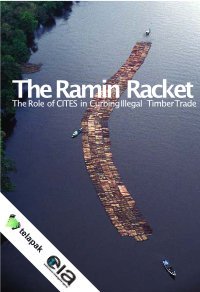By The Environmental Investigation Agency (EIA)
In this report, EIA documents for the first time the systematic export and import of illegal wood from Peru to the United States. In many ways, this report not a new story: the system’s corruption is something of which everyone in the sector is aware. EIA’s contribution lies in having identified and patiently put together the pieces of the puzzle to reveal the mechanism that allows this trade to happen: what Peruvians call the “laundering machine”.
EIA’s investigative work focused on reconstructing the routes that timber takes from the Amazon to the warehouses of US importers, through use of official information obtained under Peru’s Transparency and Access to Public Information Law. The links in this chain are willfully obscured to perpetuate confusion about the origins of almost all timber traded in Peru. EIA was able to reconstruct the chain of custody for trade in cedar (Cedrela odorata) and bigleaf mahogany (Swietenia macrophylla) only because both species are protected under the Convention on International Trade in Endangered Species of Flora and Fauna (CITES) and thus require specific export permit documents. The same illegal modus operandi is being applied for other species, but the even more limited information available regarding non-CITES species trade makes it virtually impossible to connect the concession of origin with the shipments being exported.
Washington, DC; London:: EIA, 2012. 72p.





















